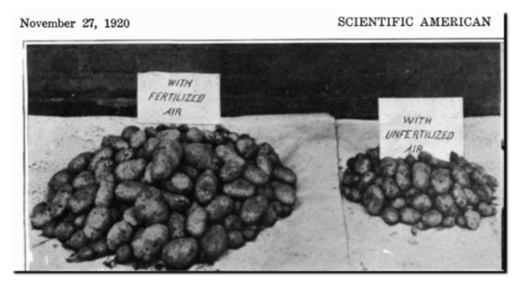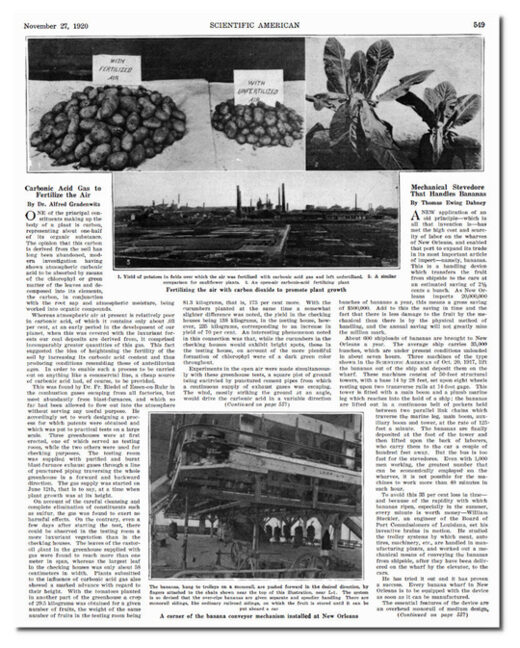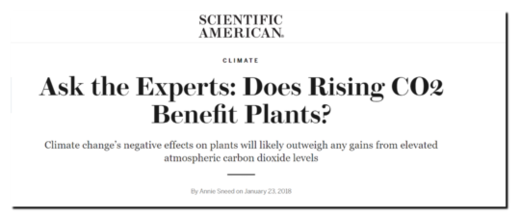In 1920, Scientific American reported that the atmosphere was deficient in CO2, and that crop productivity could be greatly enhanced by introducing CO2 emissions from from smokestacks, and that earth was covered with luxuriant forests when CO2 levels were much higher.
Tony Heller
Real Climate Science
Sun, 04 Apr 2021

Fertilizing the air with carbon dioxide to promote plant growth
ONE of the principal constituents making up the body of a plant is carbon, representing about one-half of its organic substance. The opinion that this carbon is derived from the soil has long been abandoned, modern investigation having shown atmospheric carbonic acid to be absorbed by means of the chlorophyll or green matter of the leaves and decomposed into its elements, the carbon, in conjunction with the root sap and atmospheric moisture, being worked into organic compounds.
Whereas atmospheric air at present is relatively poor in carbonic acid, of which it contains only about .03 per cent, at an early period in the development of our planet, when this was covered with the luxuriant forests our coal deposits are derived from, it comprised incomparably greater quantities of this gas. This fact suggested the idea of heightening the fertility of the soil by increasing its carbonic acid content and thus producing conditions resembling those of antediluvian ages.

November 1920 – Scientific American
Now they say –
Climate change’s negative effects on plants will likely outweigh any gains from elevated atmospheric carbon dioxide levels

Ask the Experts: Does Rising CO2 Benefit Plants? – Scientific American
In the 1920 article, they provide tens of millions of years of empirical evidence – luxuriant forests growing at much higher CO2 levels, but now they completely disregard the scientific method, throw all evidence out the window, and make nonsensical speculations based on climate models.
Martin comments: I suspect that the “demonisation” of CO2 is a plot to transport us back to a “little Ice Age”. Can’t grow your own crops, increased reliance on intensive farming and corporate greenhouse produce. By the way, the CO2 level in your average greenhouse is 1000 to1200ppm. What does that tell you?

Get your copy from our Online Store or your local book and magazine retailer
Australian Retail Locations » Uncensored Publications Limited
New Zealand Retail Locations » Uncensored Publications Limited
As censorship heats up and free thought becomes an increasingly rare commodity, we appeal to our readers to support our efforts to reach people with information now being censored elsewhere. In the last few years, Uncensored has itself been censored, removed from the shelves of two of our biggest NZ retailers – Countdown Supermarkets and Whitcoulls Bookstores – accounting for 74% of our total NZ sales.
You can help keep the Free Press alive by subscribing and/or gifting a subscription to your friends and relatives.








